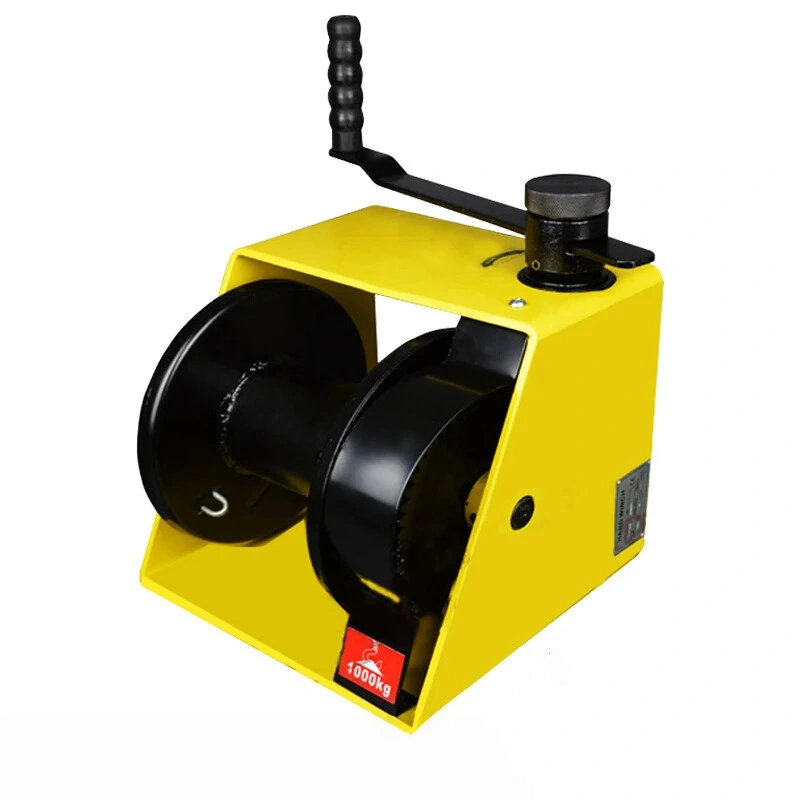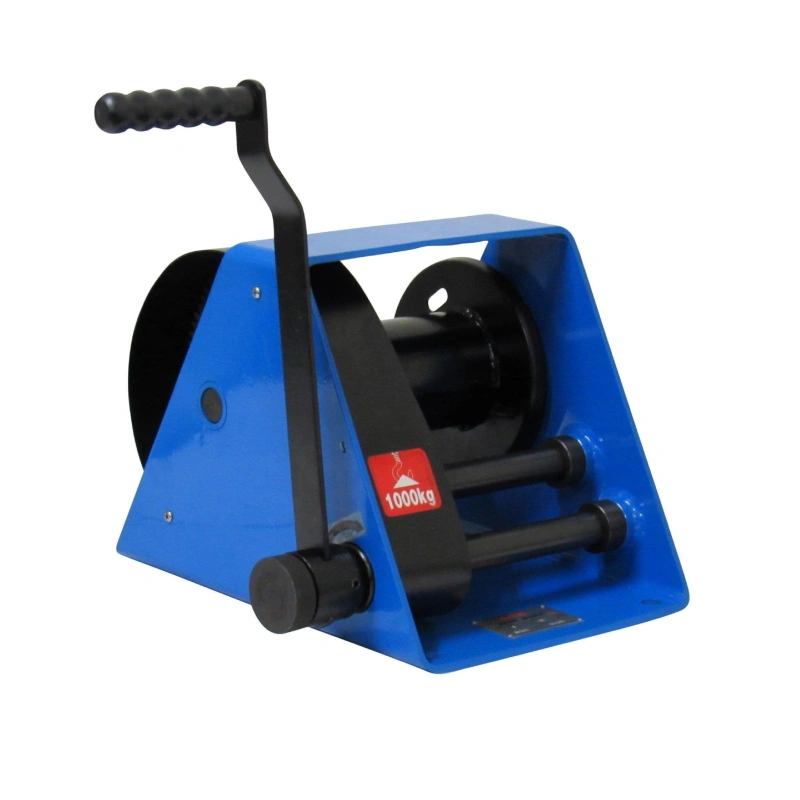Choosing the right chain grades keeps you safe and meets strict regulations in your workplace. You see different chain grades used for specific jobs, each offering unique strength and durability. The table below shows common chain grades, their working load limits, and where you might use them:
| Chain Grade | Working Load Limit (lbs) | Common Applications |
|---|---|---|
| Grade 30 | 1,300 to 6,900 | Light construction, logging, and agricultural use |
| Grade 43 | 2,600 to 13,000 | Towing, heavy-duty trucking, and construction |
| Grade 70 | 3,150 to 15,800 | Trucking, logging, heavy load securement |
| Grade 80 | 3,500 to 47,700 | Overhead lifting, rigging, and mining |
| Grade 100 | 4,300 to 35,300 | Overhead lifting, manufacturing, towing |
Selecting the best chain depends on your application, the material used, and the load you need to secure. Using the wrong chain grade can put you and your team at risk.
Key Takeaways
- Choose the right chain grade based on your specific application to ensure safety and compliance.
- Always check the working load limit (WLL) of a chain before use. It should exceed the weight of the load you intend to lift or secure.
- Inspect chains regularly for damage or wear. Remove any chain that shows signs of cracks or elongation to prevent accidents.
- Understand the differences between chain grades. Use Grade 80 or higher for overhead lifting, while Grade 70 is suitable for towing and load securement.
- Follow safety standards set by organizations like OSHA and ASME to ensure your chains meet necessary regulations.
Chain Grades Overview
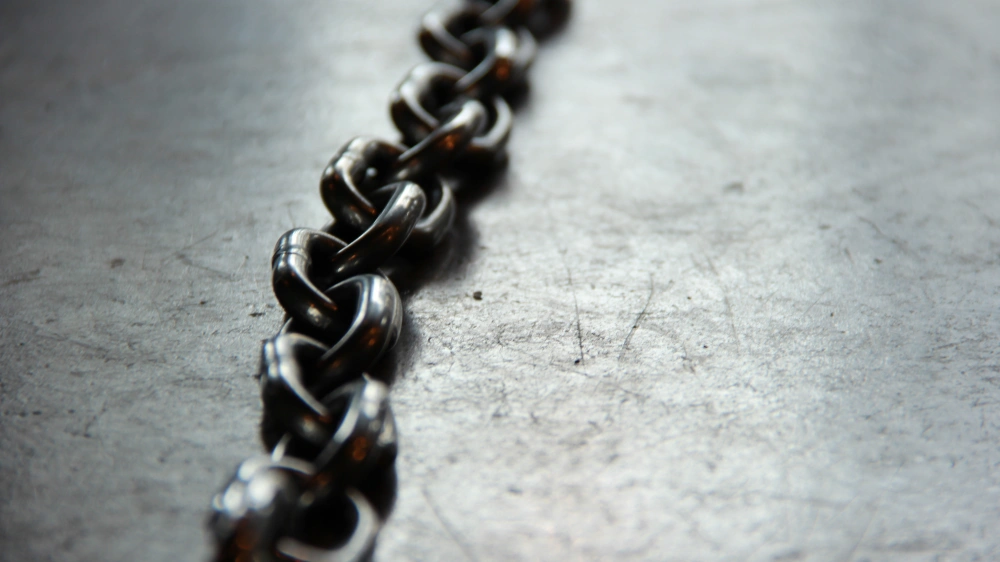
Quick Comparison Table
You need to understand how chain grades differ before you choose the right one for your job. The table below shows the main differences in material composition, strength ratings, and typical applications. This helps you see which chain grade fits your needs best.
| Chain Grade | Material Composition | Strength Rating | Typical Applications |
|---|---|---|---|
| Grade 30 | General-purpose chain, low tensile | Low tensile strength; prone to stretch | Light construction, agricultural, marine |
| Grade 43 | Higher carbon steel | Stronger than Grade 30 | Container securement, towing, logging |
| Grade 70 | Heat-treated carbon steel | 20% stronger than Grade 43 | Load securement, towing |
| Grade 80 | Heat-treated alloy chain | High strength, economical | Overhead lifting, heavy-duty towing |
| Grade 100 | Heat-treated alloy chain | 25% stronger than Grade 80 | Sling component for overhead lifting |
| Grade 120 | Ultra-premium high-strength chain | 50% stronger than Grade 80 | Rigorous overhead lifting applications |
Tip: Powerful Machinery offers certified lifting chains in all major grades. You get reliable products tested to meet strict safety standards.
Chain Grades Explained
You see chain grades marked on the links or packaging. These numbers show the strength and material of each chain. Higher numbers mean stronger chains. For example, Grade 30 chains use general-purpose steel and work for light tasks.
Grade 43 chains use higher carbon steel, making them stronger for towing and logging.
Grade 70 chains use heat-treated carbon steel. This makes them about 20% stronger than Grade 43. You often use these for load securement and heavy-duty towing.
Grade 80 and Grade 100 chains use heat-treated alloy steel. These chains work best for overhead lifting and rigging applications. Grade 120 chains use ultra-premium alloy steel and offer the highest strength for demanding lifting jobs.
Organizations like ASTM, ASME, and OSHA set standards for chain grades. These standards help you know the chain’s breaking strength and ensure safety. Chains must pass strict tests before you use them in industrial settings.
Different Grades and Uses
You need to match the chain grade to your application. Here is a quick guide:
- Grade 30: Use for light construction, farming, and marine tasks. This grade has low strength and stretches easily.
- Grade 43: Choose for container securement, towing, and logging. This grade offers moderate strength.
- Grade 70: Pick for cargo securement and highway use. Truckers and loggers rely on this grade for its higher load rating.
- Grade 80: Use for overhead lifting and heavy-duty towing. This grade meets high-strength requirements.
- Grade 100: Select for sling components and advanced rigging applications. This grade is 25% stronger than Grade 80.
- Grade 120: Use for the most rigorous overhead lifting jobs. This grade offers ultra-premium strength.
Powerful Machinery supplies all these chain grades. You get products that meet or exceed OSHA and international standards. The company tests every chain to ensure safety and reliability. You can trust Powerful Machinery for certified lifting and rigging solutions in construction, marine, transportation, and cargo handling.
Chain Materials and Strength
Carbon Steel Grades
You often see carbon steel chains in general-purpose applications. These chains use low or medium-carbon steel. The material gives them basic durability and flexibility. Carbon steel chains, such as Grade 30, Grade 43, and Grade 70, work well for light construction, towing, and cargo securement.
They do not handle heavy loads or overhead lifting. The strength of carbon steel chains depends on the amount of carbon and the heat treatment used.
| Material | Strength | Hardness |
|---|---|---|
| Carbon Steel | Close durability | Varies with treatment |
Grade 30 chains are the most common for light-duty tasks. Grade 43 and Grade 70 chains offer higher strength but still fall short for lifting heavy loads.
Alloy Steel Grades
Alloy steel chains stand out for their superior strength and toughness. Manufacturers add elements like chromium, nickel, and molybdenum to the steel. This mix increases both the tensile strength and the hardness of the chain.
You find alloy steel chains in Grade 80, Grade 100, and Grade 120. These grades are designed for overhead lifting, rigging, and demanding industrial jobs.
- Grade 80 chains use a special alloy steel mix. They handle heavy-duty lifting and rigging.
- Grade 100 and Grade 120 chains offer even higher strength for the most challenging applications.
- Powerful Machinery produces high-tensile alloy steel chains that meet strict international standards.
| Parameters | Carbon Steel | Alloy Steel |
|---|---|---|
| Tensile Strength | Up to 450 MPa | Up to 960 MPa |
Note: Alloy steel chains can handle much higher loads than carbon steel chains. Always choose the right material for your application.
Chain Strength and Markings
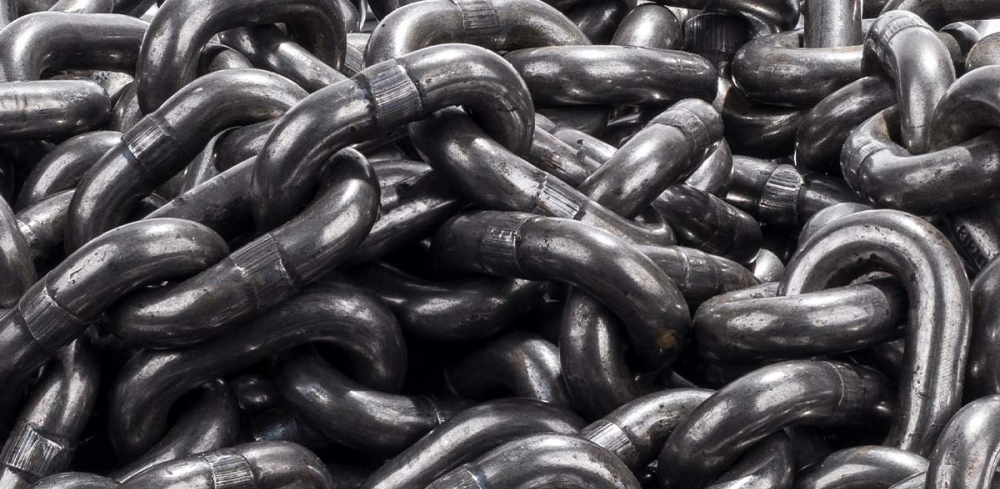
You can identify chain grades and strength by looking at the markings on each link. Manufacturers stamp the grade number, such as “G80” or “G100,” directly onto the chain. These markings help you select the correct chain for your job and ensure compliance with safety standards.
| Grade | Common Standard | Typical Material Mix | Minimum Breaking Force Ratio | Typical Applications |
|---|---|---|---|---|
| G30 | ASTM A413 | Low-carbon alloy | — | Light cargo, fencing |
| G43 | NACM 96 | Low-carbon alloy | — | Towing, lumber tie-down |
| G70 | ASTM 80 | Low-carbon manganese | — | Truck tie-downs, pipe transport |
| G80 | EN 818-2 | Mn-Cr-Ni alloy | 4 × WLL | Sling assemblies, mining loads |
| G100 | PAS 1061 | Ni-Cr-Mo alloy | 4 × WLL | Crane slings, offshore lifting |
| G120 | TOPONE G12 | Ni-Cr-Mo-Ti alloy | 4 × WLL | Offshore lifts, wind turbines |
You should always check these markings before using a chain. This step helps prevent accidents and ensures you use the right chain for the load.
Working Load Limits and Sizing
Chain Grading Process
You need to understand how manufacturers grade chains before you select one for your job. Chain grades show the strength and material of each chain. Manufacturers test each chain for its ultimate breaking strength. They stamp the grade on the links so you can identify it easily.
Higher chain grades mean the chain can handle more stress and tension. Powerful Machinery uses advanced steel and strict grading processes to ensure every chain meets international standards. You should always check the grade before using a chain for lifting or securing loads.
Chain Sizes
Chain size plays a big role in how much weight you can lift or secure. Larger chain diameters give you higher strength and greater working load limits. You need to match the chain size to the weight and type of cargo.
Powerful Machinery offers a wide range of chain sizes, so you can find the right fit for your application. When you choose a chain, look at the diameter, length, and material. Chains made from alloy steel provide higher strength for demanding jobs. Always follow sizing guidelines to meet safety regulations.
Tip: Select a chain with a working load limit that exceeds your cargo weight. Consider environmental conditions and choose chains with protective finishes if you work outdoors.
- Weight & Type of Cargo: Make sure the chain’s working load limit is higher than the cargo weight.
- Government Regulations: Follow DOT and CVSA rules for cargo securement.
- Environmental Conditions: Pick chains with coatings to resist weather and corrosion.
Determining WLL
You must calculate the WLL before using any chain for lifting or securing loads. The working load limit tells you the maximum safe weight the chain can handle. Use the formula:
WLL = MBL / SF
MBL stands for minimum breaking load. SF means safety factor. For example, if a chain’s ultimate breaking strength is 20,000 lbs and the safety factor is 4, the WLL is 5,000 lbs. Higher chain grades and larger sizes give you higher WLLs.
Powerful Machinery provides certified chains with clear markings, so you can check the WLL quickly. Always use chains with a WLL that matches or exceeds your needs. This keeps you safe and helps you meet industry regulations.
Safety Standards
Key Safety Standards
You need to understand the main safety standards before you select chain grades for industrial use. These standards help you keep your workplace safe and compliant. The table below shows the most important safety standards for chain selection:
| Standard | Description |
|---|---|
| OSHA | Ensures compliance with safety regulations for lifting equipment. |
| ASME B30.9 | Requires proofloading of alloy lifting chain assemblies before initial use. |
| NACM | Specifies chain specifications and requirements for safe use. |
| ASTM | Sets standards for materials and performance of chains used in lifting. |
ASME B30.9 covers the fabrication, use, inspection, and testing of slings. You find these rules apply to alloy steel chain and wire rope slings. Following these safety standards helps you avoid accidents and ensures your chain meets strict requirements.
Chain Grades and Compliance
You must choose the correct chain grade for your application. Each grade meets specific standards for strength and durability. You see markings on the chain that show the grade and help you verify compliance.
Powerful Machinery tests every chain to meet or exceed international safety standards. You get products certified by ISO9001, TUV Rheinland, and other leading organizations. This commitment to safety gives you confidence in every chain you use.
Note: Always check the markings and certifications before you use a chain for lifting or securing loads.
Regulatory Requirements
Regulatory requirements for chain grades can differ by region. In the United States, you follow OSHA and ASTM standards for chain selection. Europe uses stricter rules for materials and performance.
Canada and Australia align with U.S. standards but have their own regulations for chain use. You need to check local standards before you choose a chain for your project.
Powerful Machinery meets global safety standards and provides certified chains for construction, marine, and cargo handling. You can rely on their products to meet the highest safety standards in any region.
Lifting Applications and Chain Selection
Choosing Chain Grades
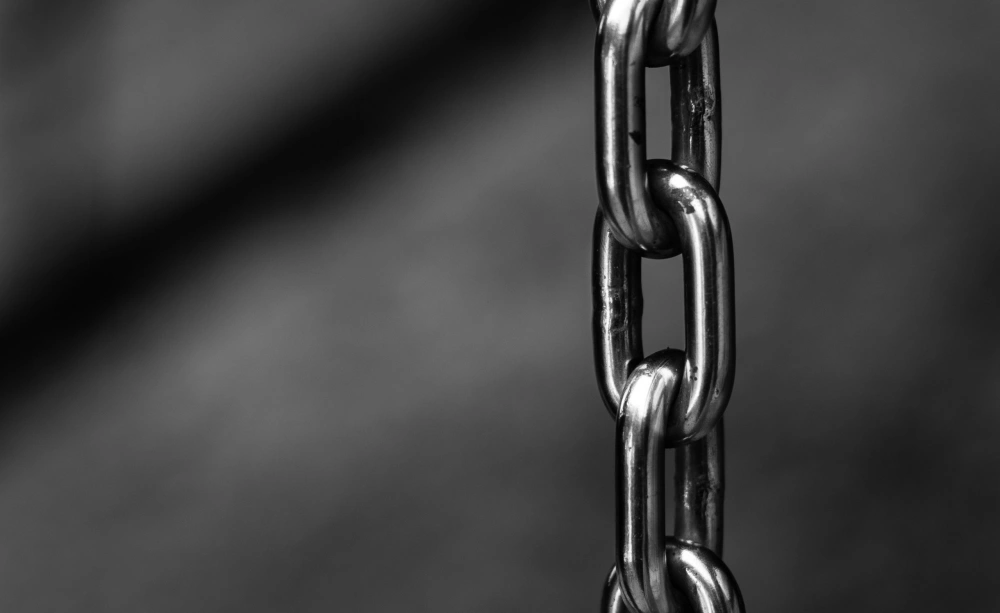
Selecting the right chain for lifting applications requires careful planning. You must understand chain grades to ensure safe rigging and load securement. Each grade indicates the ultimate breaking strength and helps you match the chain to your task. You should always follow ASME standards to avoid safety violations.
When you choose a chain, consider these important factors:
- Load Characteristics: Check the weight, size, and shape of your load. Make sure you know the center of gravity.
- Chain Grade and Load Capacity: Pick a chain grade that matches or exceeds the weight of your load. For example, use Grade 80 or Grade 100 for heavy lifting.
- Sling Configuration: Decide if you need a single-leg, double-leg, or multi-leg sling. The right configuration keeps your load stable.
- Environmental Factors: Think about temperature, chemicals, and moisture. Some chains work better in harsh conditions.
- Working Load Limit: Always use a chain with a working load limit higher than your cargo weight.
- Compliance: Make sure your chain meets ASME and OSHA standards.
Powerful Machinery offers custom-engineered lifting solutions. You can work with their experts to select the best chain for your project. Their certified products help you meet safety and performance requirements in any environment.
Tip: Never use a chain for lifting if you cannot verify its grade or working load limit.
Grade 43 vs Grade 70 Chain
You often need to compare Grade 43 and Grade 70 chains for rigging and securement. The table below shows the main differences:
| Chain Grade | Breaking Strength | Recommended Usage |
|---|---|---|
| Grade 43 | Stronger than Grade 30; better resistance to wear and tear | Container securement, logging, farming, towing, marine, general utility |
| Grade 70 | About 20% higher load rating than Grade 43 | Trucking, logging, highway load securement, towing |
Grade 43 chains work well for general utility and moderate loads. Grade 70 chains provide higher strength and are the top choice for truckers and highway crews. You should always check the load requirements before making your selection.
Grade 70 vs Grade 80 Chain
You may wonder how Grade 70 compares to Grade 80. Grade 70 chains cost less and work well for securing loads. Grade 80 chains offer superior performance for lifting and rigging, especially when safety is critical.
- Grade 70 chains are affordable and ideal for cargo securement.
- Grade 80 chains provide higher strength and are designed for overhead lifting.
- Both grades meet NACM and OSHA standards for reliability and safety.
- Grade 80 chains cost more because of their enhanced strength and manufacturing process.
If you need a chain for lifting, always choose Grade 80. Grade 70 chains should not be used for overhead lifting.
Identifying Chain Grades
You must identify the correct chain grade before using it for lifting or rigging. Manufacturers stamp the grade number, such as “G70” or “G80,” on the links. Always look for these markings. Never rely only on visual inspection, as this can lead to mistakes. Misidentifying a chain grade can cause accidents and damage.
If you cannot find a clear marking, do not use the chain for lifting applications. Powerful Machinery provides chains with clear, permanent markings. This helps you avoid errors and ensures compliance with safety standards.
Note: Accurate identification of chain grades protects you from costly mistakes and keeps your workplace safe.
Safety Practices and Common Mistakes
Common Errors
You face several risks when you select or use chains without proper care. Many workplace accidents happen because of simple mistakes. The table below shows frequent errors and their consequences:
| Mistake | Consequence |
|---|---|
| Improper sizing and selection | Leads to significant operational issues, including premature failures and reduced service life. |
| Overloading | Accounts for 40% of premature failures, causing mechanical failures and potentially catastrophic events. |
| Uneven loading | Results in misalignment issues, accelerating wear and increasing the likelihood of sudden failure. |
You can avoid most problems by matching the right chain grades to your application and never exceeding the working load limit. Always check the chain markings before use.
Regular inspections can reduce chain-related failures by up to 75%. This simple step keeps your workplace safer and helps you avoid costly downtime.
Alloy Chain Misuse
You must use alloy chains only for tasks they are designed to handle. Many accidents occur when workers use alloy chains for general purposes or overload them.
Alloy chains, such as Grade 80 and above, work best for overhead lifting and rigging. Never use these chains for towing or tie-downs unless the manufacturer approves. Misusing alloy chains can lead to sudden breakage and serious injuries.
Tip: Always follow manufacturer guidelines and industry standards when you select alloy chains for lifting.
Training and Inspection
You need proper training to handle chains safely. Safe lifting training teaches you about the dangers of overexertion and the importance of using correct techniques. Ongoing training helps you stay updated on new equipment and safety rules.
Workers who receive regular training understand how to use chains correctly and comply with OSHA standards.
Inspection is another key safety practice. You should inspect chains visually every day before use. Perform a complete inspection at least once a year and keep written records.
Remove any chain from service if you find missing tags, cracks, excessive wear, or signs of heat damage. Chains used more often or in harsh environments need more frequent checks.
Powerful Machinery supports you with resources and guidance for safe operation. Their certified products come with clear markings and documentation, making inspection and compliance easier.
Conclusion
Understanding chain grades, material composition, and strength ratings helps you make safe choices for rigging and overhead lifting. You must always match different grades of chain to your specific applications and follow lifting standards and load securement safety standards.
- Review working load limits before selecting a grade 80 alloy chain for overhead lifting or rigging.
- Confirm that your chain meets lifting standards and is suitable for overhead applications.
- Inspect and maintain your grade 80 alloy chain monthly, replacing any chain with visible cracks or elongation.
- Use different grades of chain for overhead lifting, rigging, and securement, considering environmental factors.
| Misconception | Solution |
|---|---|
| Any similar chain will perform the same | Review real working conditions before replacement. |
| Ignoring environmental factors | Assess environment, speed, load, temperature, humidity, and lubrication before choosing a grade 80 alloy chain. |
You can rely on Powerful Machinery for ISO-certified grade 80 alloy chain and other different grades of chain for overhead lifting, rigging, and securement. For more guidance, explore resources on rigging, overhead lifting, and lifting standards from industry associations.
FAQ
What does the chain grade number mean?
Chain grade numbers show the strength and material type. Higher numbers mean stronger chains. You can find the grade stamped on each link. Always check this marking before you use a chain for lifting or securing loads.
How do you choose the right chain grade for lifting?
You should match the chain grade to your load weight and application. Use Grade 80 or higher for overhead lifting. Check the working load limit and make sure the chain meets safety standards.
Tip: Always verify the chain’s markings and certifications before use.
Can you use Grade 70 chains for overhead lifting?
No, you cannot use Grade 70 chains for overhead lifting. Grade 70 chains work best for load securement and towing. For lifting, choose Grade 80 or higher.
| Chain Grade | Overhead Lifting Use |
|---|---|
| Grade 70 | ❌ Not allowed |
| Grade 80 | ✅ Allowed |
What safety checks should you perform before using a chain?
You should inspect chains for cracks, wear, and missing markings. Remove any damaged chain from service. Keep records of inspections and follow manufacturer guidelines.
- Check for visible damage
- Confirm grade markings
- Review inspection history
Does Powerful Machinery offer certified chains for global standards?
Yes, Powerful Machinery supplies chains certified to meet international standards like ISO, OSHA, and ASTM. You can trust their products for safety and reliability in any region.
Visit Powerful Machinery’s website for more details.

